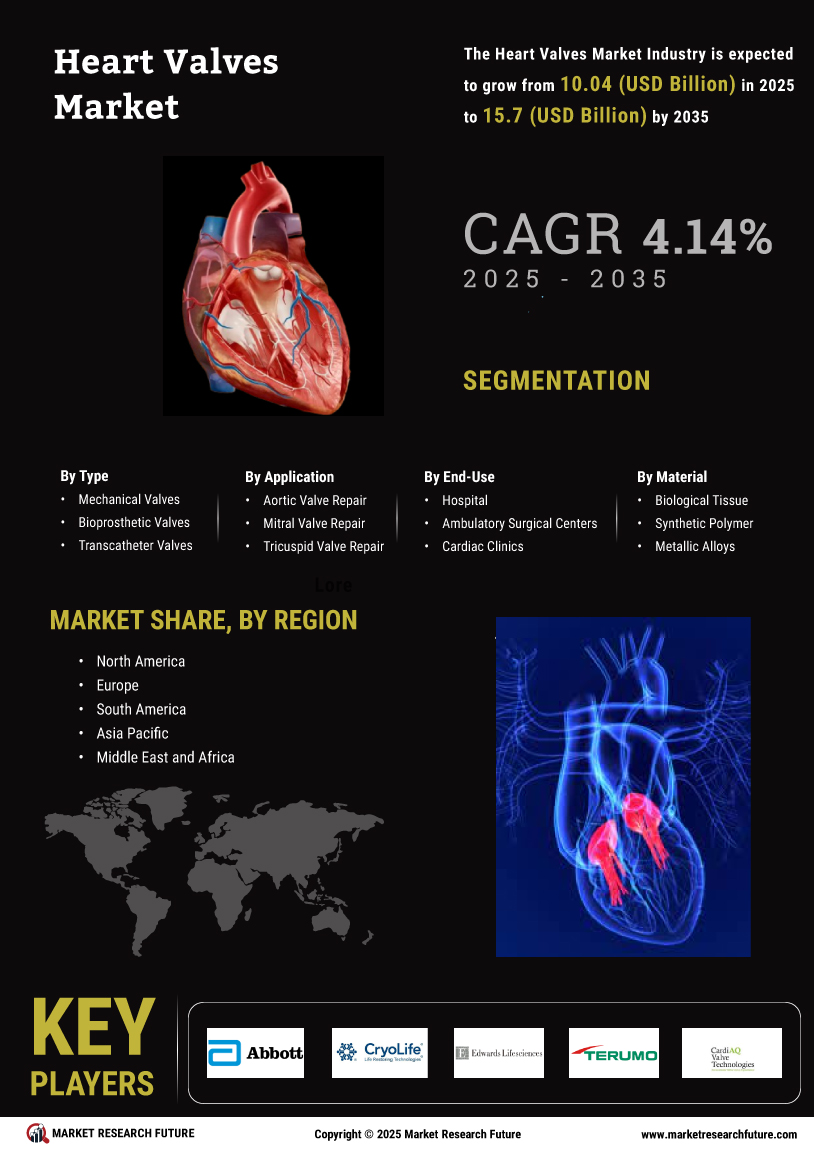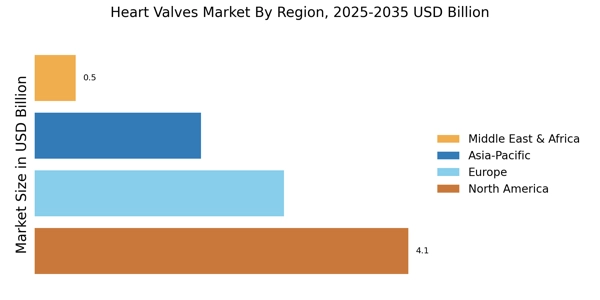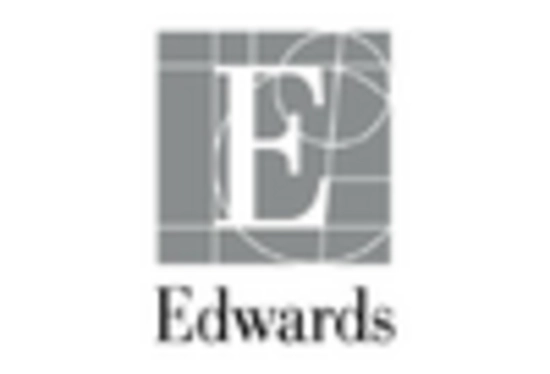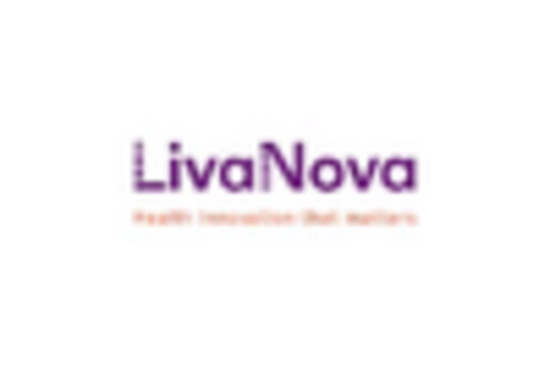Aging Population
The increasing prevalence of heart valve diseases among the aging population appears to be a primary driver for the Heart Valves Market. As individuals age, the risk of developing conditions such as aortic stenosis and mitral regurgitation escalates. According to recent data, nearly 30% of individuals over the age of 70 are affected by some form of heart valve disease. This demographic shift necessitates a greater demand for heart valve interventions, thereby propelling the market forward. The Heart Valves Market is likely to experience substantial growth as healthcare systems adapt to meet the needs of this expanding patient population, emphasizing the importance of innovative treatment options and advanced surgical techniques.
Technological Innovations
Technological advancements in heart valve design and surgical techniques are significantly influencing the Heart Valves Market. Innovations such as transcatheter aortic valve replacement (TAVR) and the development of bioprosthetic valves have revolutionized treatment options. The market for heart valves is projected to reach USD 12 billion by 2026, driven by these advancements. Furthermore, the integration of 3D printing technology in valve manufacturing allows for personalized solutions tailored to individual patient anatomies. This trend not only enhances patient outcomes but also fosters competition among manufacturers, leading to a broader range of products in the Heart Valves Market. As technology continues to evolve, it is anticipated that the market will expand further, offering new possibilities for both patients and healthcare providers.
Increased Awareness and Screening
Growing awareness regarding heart health and the importance of early screening for heart valve diseases is contributing to the expansion of the Heart Valves Market. Educational campaigns and initiatives by healthcare organizations are encouraging individuals to seek medical advice and undergo regular check-ups. This proactive approach is leading to earlier diagnoses and, consequently, a higher demand for heart valve interventions. The Heart Valves Market is likely to benefit from this trend, as more patients are identified as candidates for surgical procedures. Furthermore, advancements in diagnostic technologies, such as echocardiography, are facilitating timely detection of valve disorders, further driving the market's growth. As awareness continues to rise, the industry may witness a surge in both preventive and corrective heart valve treatments.
Rising Incidence of Cardiovascular Diseases
The escalating incidence of cardiovascular diseases is a critical factor propelling the Heart Valves Market. Heart valve disorders are often associated with other cardiovascular conditions, which are on the rise due to lifestyle changes and an increase in risk factors such as obesity and diabetes. Recent statistics indicate that cardiovascular diseases account for approximately 31% of all global deaths, underscoring the urgent need for effective treatment options. This alarming trend is likely to drive demand for heart valve replacements and repairs, thereby stimulating growth within the Heart Valves Market. As healthcare providers seek to address this public health challenge, the focus on innovative heart valve solutions is expected to intensify.
Regulatory Support and Reimbursement Policies
Supportive regulatory frameworks and favorable reimbursement policies are essential drivers for the Heart Valves Market. Governments and health authorities are increasingly recognizing the importance of heart valve interventions in improving patient outcomes. As a result, there has been a push for streamlined approval processes for new heart valve technologies, which encourages innovation and market entry. Additionally, favorable reimbursement policies for heart valve procedures are likely to enhance patient access to these treatments, thereby stimulating demand. The Heart Valves Market stands to gain from these supportive measures, as they not only facilitate the introduction of advanced products but also ensure that patients receive necessary care without financial barriers. This regulatory environment is expected to foster a more robust market landscape.


















Leave a Comment